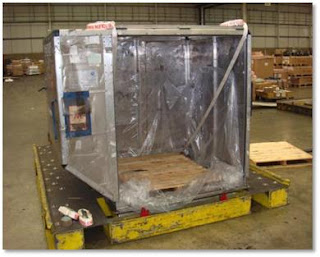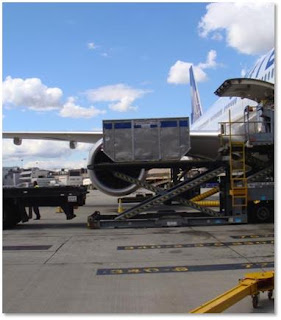The final talk of the CPD event was a panel discussion
between Sunnifa Hope, Helen Dawson, and Jen Kaines, chaired by Lyn Wall.
The first question raised, “What has been the most
challenging decision you’ve had to make whilst on a courier trip or whilst
hosting a courier?” gave many amusing stories of disappearing curators,
unfinished galleries, and even guest couriers turning up ‘the worse for wear’.
Clearly, couriering objects and hosting couriers is not always a simple task,
and requires the ability to think on your feet.
The importance of good communication was also highlighted
through the examples given to this first question, with Sunnifa Hope
summarising “it’s about communication, having dialogue, deciding together what
you’re going to do to allow the installation to happen. Just be prepared to
come up with solutions with the courier and talk to them continually, whether
it’s “you’ve got to stop doing this” or “can I do something this way?”
Questions raised by the audience emphasised the importance
of decision making during courier trips. When asked if the panellists had ever
decided not to install an object, and what happened afterwards, Jen Kaines
provided an example of arriving at a gallery still wet with paint. In that
instance, she and her colleague made the decision not to install at that time (installing
around a week later instead).
Likewise, Sunnifa Hope described a time she and a
colleague had to decide what to do when a power cut meant that an installation
had to stop and they had to decide whether to pack away the objects completely
and return another time, or come back that day when the power came back on and
work late into the evening (they did the latter).
Other than showcasing the importance of good communication,
thinking on your feet and being confident in your ability to make the best
decision for yourself and the object, the panel discussion gave further advice:
sometimes a borrower may request a courier to be sent or a lender may request a
courier from your institution; you can sometimes double-up your couriers tasks,
so they can visit long-term loans as well as installing the new ones; and when
sharing couriers, make sure it is explicitly decided what the responsibilities
are and who can make the decisions (all the better if you can get something in
writing).
So to end with the final section of the panel – Top Tips:
Sunnifa Hope – “You’re representing your institution, make
sure you understand exactly what your loan is and the requirements of your loan
are so that you can make decisions on the spot. And don’t plan anything else
around that trip!”
Helen Dawson – “Know your object – not just how to install
it but what might it do in a changing environment, how might it behave after a
bad journey.”
Jen Kaines – “Never pass up a toilet stop, you don’t know
when the next one will be.”
Sam Jenkins, Assistant Registrar, National Railway Museum




